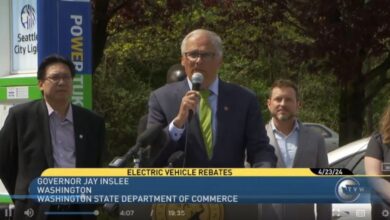Advanced Economic Modeling Can Support the Transition to Electric Vehicles

Data from 2022 indicate that medium- and heavy-duty electric trucks constituted only 0.4 percent of registrations for all new trucks in the United States. Various hurdles may hinder the widespread adoption of medium- and heavy-duty electric vehicles, including the high up-front cost of electric trucks and buses, the high cost and low availability of charging infrastructure, and complexities surrounding electricity tariffs. Regulatory impact analyses that use models like the MOtor Vehicle Emission Simulator, EMission FACtor model, or total cost of ownership–based models often fail to fully capture some of these hurdles, particularly those that require changes in logistics, behavior, or learning by fleet managers.
For example, the EMission FACtor model relies on sales forecasts from the US Energy Information Administration’s Annual Energy Outlook to assess the impact of regulatory measures, but the model doesn’t account for how these regulations influence decisions for fleet purchases. Consider California’s Advanced Clean Trucks regulation, which mandates that manufacturers sell a certain percentage of zero-emission vehicles. If there are significant barriers to electric vehicle adoption, the model will likely yield overly optimistic projections for new electric vehicle sales.
While the total cost of ownership–based models effectively capture visible hurdles, such as the up-front price of vehicles and chargers, they do not include less obvious hurdles such as fleet owners’ preferences for specific vehicle features, nor transition costs such as those that arise from having to navigate complex electricity tariffs. By not incorporating the preferences of fleet owners or transition costs in their models, regulatory agencies risk underestimating the costs or overestimating the efficacy of a regulation.
Furthermore, total cost of ownership–based models do not adjust new and used vehicle prices and sales forecasts in response to stringent regulations. Because regulations target only new trucks, these policies may contribute to increased up-front costs to purchase these vehicles (and potentially affect the price of vehicles in the used market); thus, these models would fail to consider the very real possibility that fleets might continue using older vehicles for extended periods. In fact, historical data reveal a consistent increase in truck lifespans and a decline in their scrappage rates.
To explore this issue more directly, we analyzed vehicle registration records from five different years: 2002, 2007, 2012, 2017, and 2022. Figure 1 shows the five-year scrappage rates for certain classes of medium- and heavy-duty vehicles, broken down by vehicle age for these years. Each line represents a different five-year interval. For each age group, the values show the percentage of trucks that were taken off the road within that five-year interval. For example, the yellow curve indicates that 10 percent of 50-year-old trucks registered in 2017 were taken off the road before 2022. Moreover, the end points of the curves on the x-axis indicate the age of the oldest vehicles that were registered in each year.



